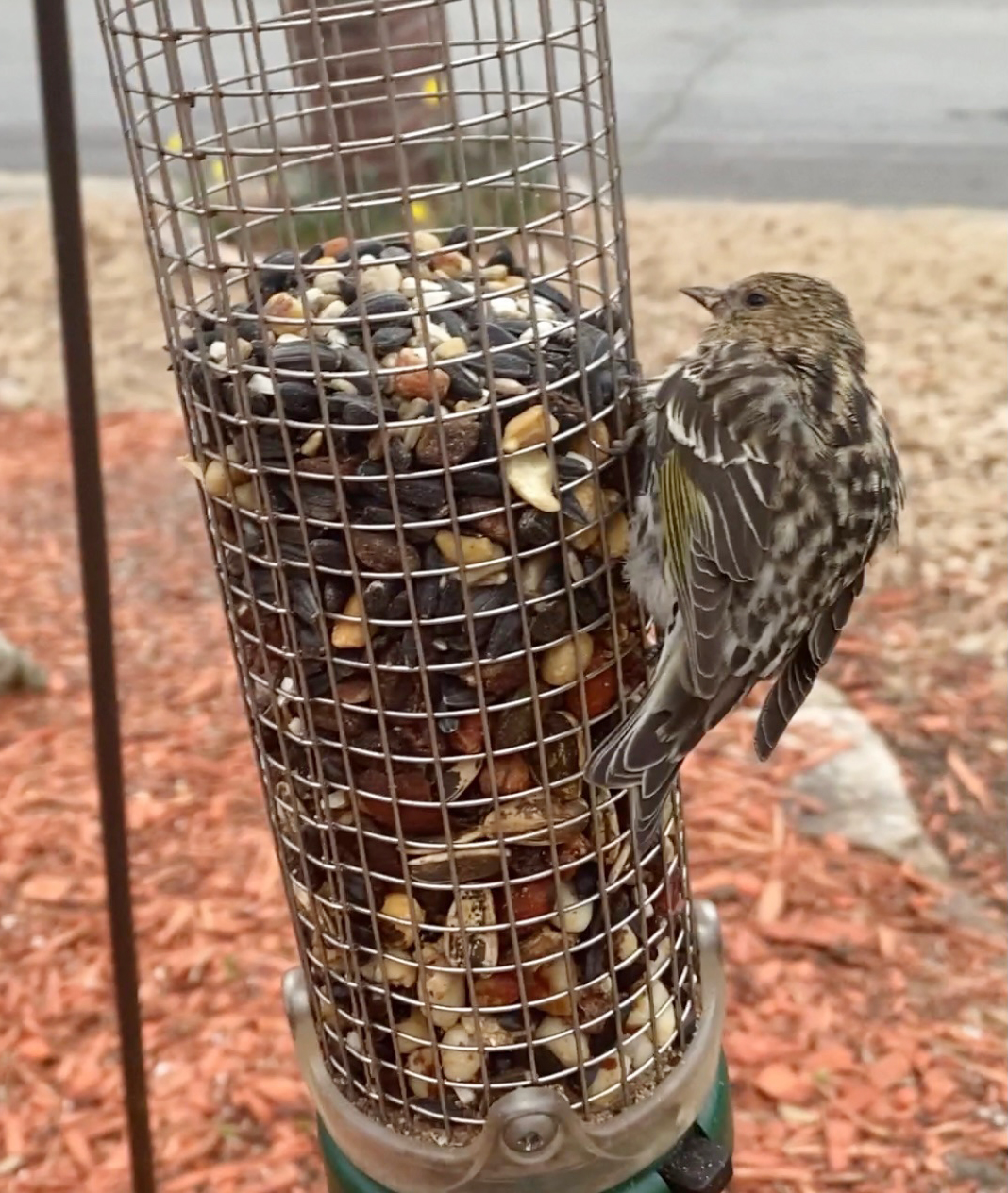March 23, 2021
Feeders linked to bird disease transmission
By Mary Hightower
U of A System Division of Agriculture
Fast facts
- Remove or clean out feeders, birdbaths to prevent disease transmission
- Report sick or dead birds to health@agfc.ar.gov
(523 words)
LITTLE ROCK — Backyard birdwatcher Amy Cole has noticed some disturbing scenes around her house.
Cole is the extension digital media program manager for the University of Arkansas System Division of Agriculture based in Pulaski County. She enjoys having birds at her feeder and they are often a subject of her paintings.
“I have seen three dead birds at my house in the past two days, and two let me get so close I can almost touch them,” she said. “They just wouldn’t move. It’s certainly very unusual behavior.”
Social media has been lighting up with news about Salmonella outbreaks among siskins in Oregon and California, with advice to readers to take down the feeders because they cause birds to congregate and spread infection. In Arkansas, the issue showed up in February in the Wild Birds Unlimited Facebook group and other places. Signs of infection can include lethargy, having their feathers fluffed up and staying on the ground and avoiding flight.
Dustan Clark, extension veterinarian for the Division of Agriculture said the West Coast outbreak “is thought to be related to a shortage of their natural food base in their overwintering grounds in Canada. The food shortage has caused them to leave the wintering grounds in search of food, which they find at feeders.”
“Unusual weather patterns catch the birds off guard,” he said. “With limited food resources, birds either choose to stay or use their remaining energy to migrate to a better locale. The wrong decision could be deadly.”
Clark said some of the birds themselves could be carriers of the Salmonella bacteria which they can spread to other birds when congregating at feeders. Salmonella, other bacteria and fungi can also “grow in spoiled feeds in bird feeders. It is always a good idea to periodically clean and disinfect bird feeders and waterers to prevent disease.”
Clark suggested people clean out any hulls or seed residue that would get moldy or rot in spring’s warmer and rainy weather.
He warned that Salmonella can also cause illness in humans and urged people to take precautions. Cats and any other animals that eat the sick birds may also become sick or infected.
“If you pick up a dead bird, wear gloves or use a plastic bag over your hands and turn the bag inside out once you’ve picked up the bird. Then wash your hands with soap and water,” Clark said. “When you clean the feeder, wear gloves as well.”
What to do If you find sick or dead birds
If the public finds sick or dead birds, email agfc.health@agfc.ar.gov and provide contact information, the location of sick or dead birds, when they found the sick or dead birds, the number of sick or dead birds and include any photos.
Mycoplasma infections are also common in spring Clark said. “We see this infection also about this time of year. It’s a bacterial infection of the eye, the area around the eye and the sinuses. It will cause eyes to swell shut.”
Disease outbreaks are sometimes linked to migrations, though they can happen year-round.
“As the birds are coming through, they’re eating at the feeders. It’s easy food,” Clark said.
Clark also warned those with backyard chickens and turkeys to keep “wild birds out of your chicken houses” to prevent their flocks from being infected.
Find additional information here: https://www.agfc.com/en/news/2021/03/17/dont-be-a-superspreader-keep-bird-feeders-clean/.
To learn about extension and research programs in Arkansas, visit https://uada.edu/
Follow us on Twitter at @AgInArk, @uaex_edu or @ArkAgResearch.
About the Division of Agriculture
The University of Arkansas System Division of Agriculture’s mission is to strengthen agriculture, communities, and families by connecting trusted research to the adoption of best practices. Through the Agricultural Experiment Station and the Cooperative Extension Service, the Division of Agriculture conducts research and extension work within the nation’s historic land grant education system.
The Division of Agriculture is one of 20 entities within the University of Arkansas System. It has offices in all 75 counties in Arkansas and faculty on five system campuses.
Pursuant to 7 CFR § 15.3, the University of Arkansas System Division of Agriculture offers all its Extension and Research programs and services (including employment) without regard to race, color, sex, national origin, religion, age, disability, marital or veteran status, genetic information, sexual preference, pregnancy or any other legally protected status, and is an equal opportunity institution.
###
Media Contact: Mary Hightower
Dir. of Communication Services
U of A System Division of Agriculture
Cooperative Extension Service
(501) 671-2006
mhightower@uada.edu
